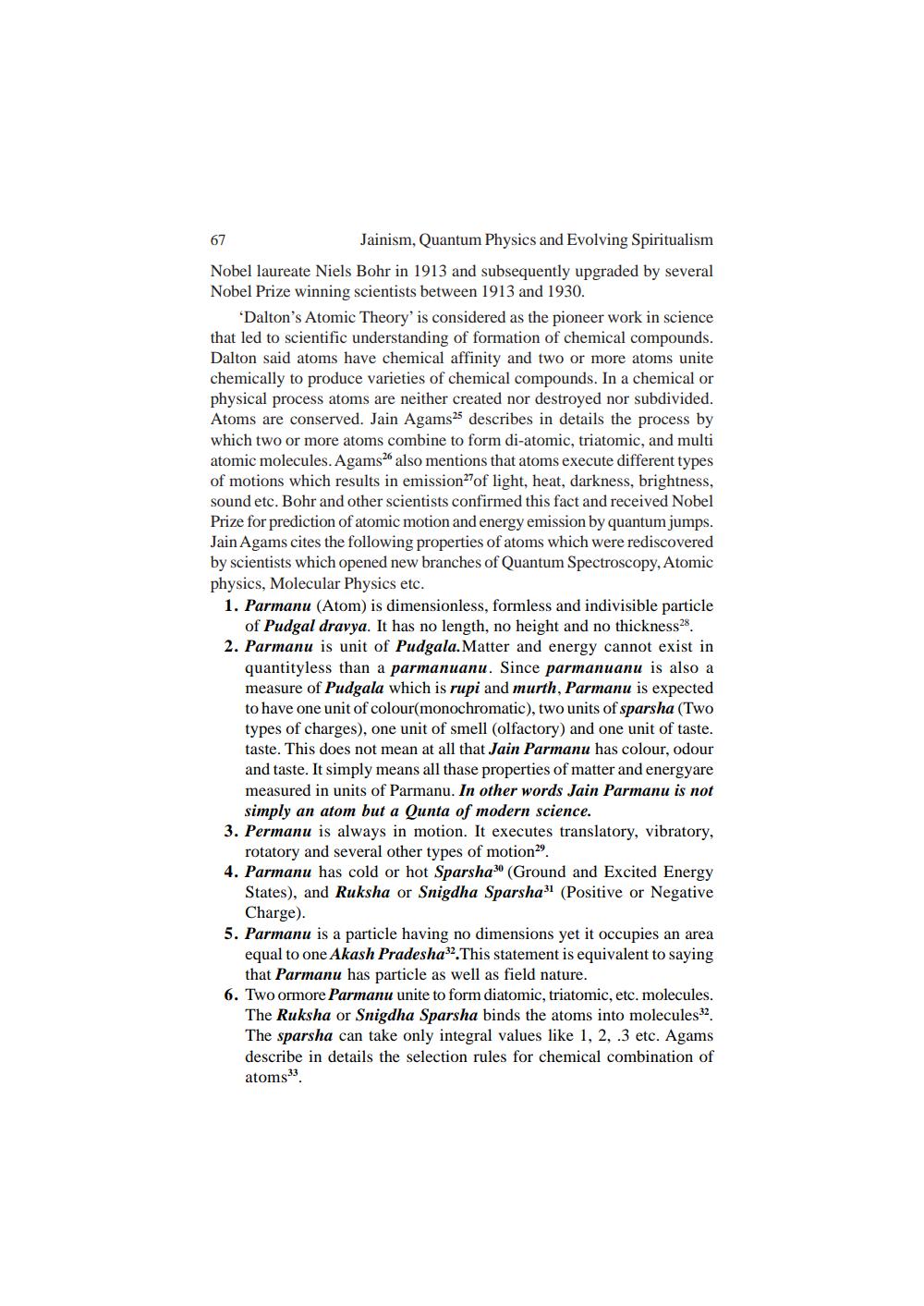________________
67
Jainism, Quantum Physics and Evolving Spiritualism Nobel laureate Niels Bohr in 1913 and subsequently upgraded by several Nobel Prize winning scientists between 1913 and 1930.
Dalton's Atomic Theory' is considered as the pioneer work in science that led to scientific understanding of formation of chemical compounds. Dalton said atoms have chemical affinity and two or more atoms unite chemically to produce varieties of chemical compounds. In a chemical or physical process atoms are neither created nor destroyed nor subdivided. Atoms are conserved. Jain Agams25 describes in details the process by which two or more atoms combine to form di-atomic, triatomic, and multi atomic molecules. Agams also mentions that atoms execute different types of motions which results in emission of light, heat, darkness, brightness, sound etc. Bohr and other scientists confirmed this fact and received Nobel Prize for prediction of atomic motion and energy emission by quantum jumps. Jain Agams cites the following properties of atoms which were rediscovered by scientists which opened new branches of Quantum Spectroscopy, Atomic physics, Molecular Physics etc. 1. Parmanu (Atom) is dimensionless, formless and indivisible particle
of Pudgal dravya. It has no length, no height and no thickness28 2. Parmanu is unit of Pudgala. Matter and energy cannot exist in
quantityless than a parmanuanu. Since parmanuanu is also a measure of Pudgala which is rupi and murth, Parmanu is expected to have one unit of colour(monochromatic), two units of sparsha (Two types of charges), one unit of smell (olfactory) and one unit of taste. taste. This does not mean at all that Jain Parmanu has colour, odour and taste. It simply means all thase properties of matter and energyare measured in units of Parmanu. In other words Jain Parmanu is not
simply an atom but a Qunta of modern science. 3. Permanu is always in motion. It executes translatory, vibratory,
rotatory and several other types of motion”. 4. Parmanu has cold or hot Sparsha30 (Ground and Excited Energy
States), and Ruksha or Snigdha Sparsha" (Positive or Negative
Charge). 5. Parmanu is a particle having no dimensions yet it occupies an area
equal to one Akash Pradesha”. This statement is equivalent to saying
that Parmanu has particle as well as field nature. 6. Two ormore Parmanu unite to form diatomic, triatomic, etc. molecules.
The Ruksha or Snigdha Sparsha binds the atoms into molecules32. The sparsha can take only integral values like 1, 2, 3 etc. Agams describe in details the selection rules for chemical combination of atoms33




